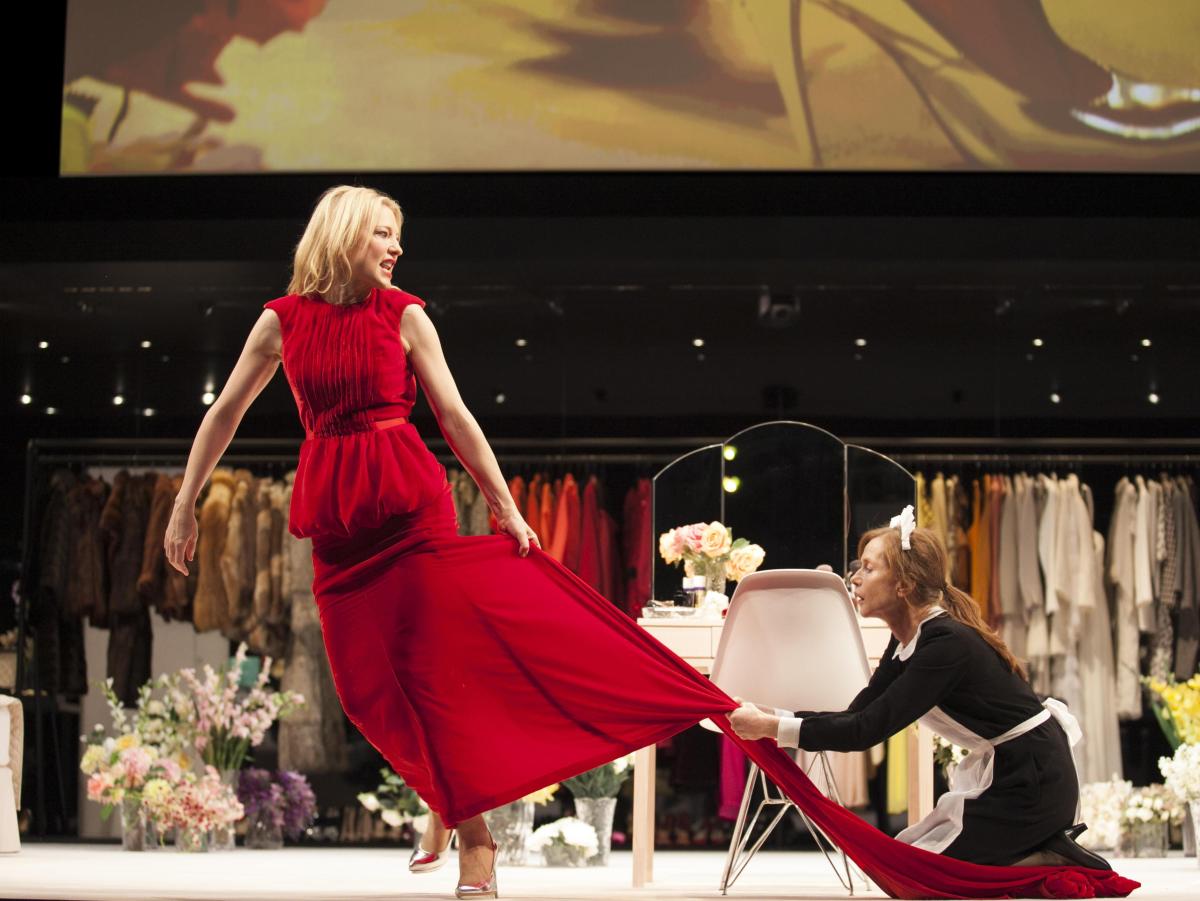Master servant: Cate Blanchett and Isabelle Huppert in Sydney Theatre Company’s The Maids – Photo:Lisa Tomasetti Maxamoo
The morning after budget night on May 13, independent artists woke to a familiar alarm. It was Groundhog Day for “the heavy-lifters”, the independent artists of Australia’s arts sector. Their miserable livelihood was once again targeted by high office in Canberra when they bore the brunt of the cuts to the arts budget.
On the other side of the ledger, the 28 organisations that comprise Australia’s Major Performing Arts Group (AMPAG) remain hermetically sealed by the largess of Arts Minister and Attorney-General George Brandis.
Brandis’ classification of the major organisations as a protected species – in pre-election and latterly budget mode – has implicit within it the inverse proposition that independent artists are fair game. Budget 2014 was only the beginning.
The challenge for the arts sector is a compelling one. Independent Australian artists are the lowest paid members of the Australian workforce. Direct funding for individual artists in Australia has fallen by about a third since the 1990s. In real terms, they earn far less from their artistic practice than they did 20 years ago.
Independent artists are barely visible at the elite levels of governance, their numbers are decreasing and their autonomy has been compromised and curtailed by policy that has institutionalised them within organisations, venues and programmes.
To satisfy majority funding criteria, artists must have one of the above as a partner, presenter or producer just to get a show up. Operating with any genuine independence is a thing of the past.
The issue, of course, is not one of the current government but one of governments, in general, and the arts sector’s capacity to respond and take care of itself and artists in the face of regressive government action.
The arts sector needs to accept responsibility for the inequity on which its success is achieved and not blame it on government action. Depending on how the figures are interpreted, AMPAG members take between 65% and 80% of the Australia Council’s budget. As of last week, their slice of the pie got a whole lot bigger.
Led by AMPAG, the arts sector has fashioned for itself the identity of “an industry”. But what industry operates on the corollary of the majority of its primary workers living on or below the poverty line?
For artists, the arts industry is a mirage. Its values are steeped in the market: competition over cooperation, profit over equity. While they may serve the ambitions of the major players in the Australian performing arts, they do nothing but disenfranchise artists. Through this prism, Brandis’ patronage of AMPAG is the act of a minister taking care of those he views as fellow travellers and disregarding those he doesn’t.
In the wake of this budget, AMPAG needs to do the heavy lifting that artists have always done. And I don’t mean just cut a bit of fat internally. I mean show responsible sector leadership.
For artists to have any faith that those better off than them have their best interests at heart, the major organisations need to push back against the Ministers’ assumptions by initiating a cut on their own subsidies to ameliorate those applied directly to the independent arts sector.
Many will argue that this is an over-simplification of a complex problem. None of those will be artists whose median earnings from their artistic practice are just A$7,000 a year. Most will come from arts managers who earn almost ten times that on average.
The collateral damage in the arts sector will be significant if the major arts organisations don’t push back. The professional field knows that the independent and small-to-medium sector is a separate ecology fulfilling a separate mission to those of the major organisations.
The depth of conservatism in the majors is historically counterpointed by the independent sector which consistently delivers on its mission of innovation, experiment, cultural diversity and risk-taking.
Few of the dynamics of the small-to-medium arts organisations and independents have correlatives in the mainstream; few companies in the majors and the small-to-medium/independent sector share the same artistic values, organisational design or professional aspirations.
The solution is not for the mainstream to bring independent artists into their fold as has been suggested but to support and nurture their independence outside of it.
By advocating for and facilitating a larger pool of discrete money for independent artists and their activities, AMPAG will ensure continuity of the arts sector’s greatest strengths: diversity and innovation. If it fails to act collectively, these will be compromised.
Put simply, the independent sector is the oxygen of the mainstream. Cut off the supply and the major performing arts organisations will suffocate. If they don’t step up, they’ll die. It’s up to them.
This article was first published in The Conversation





